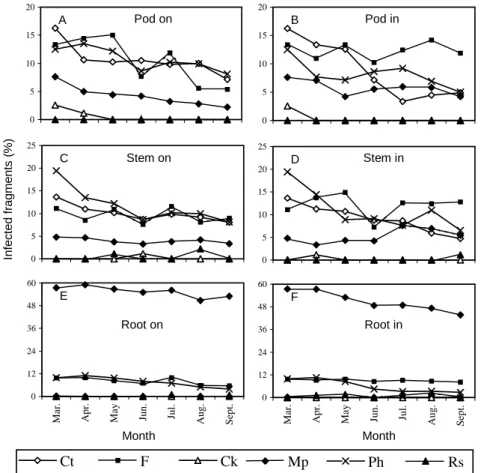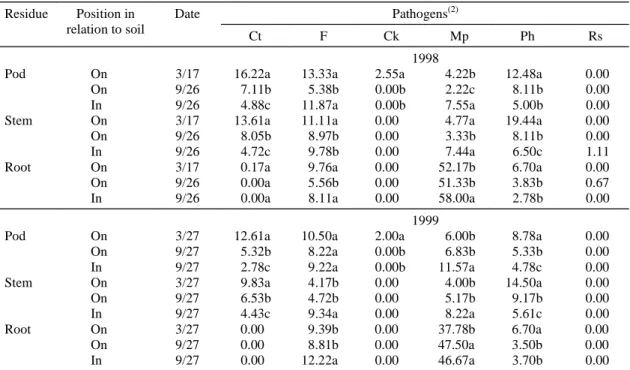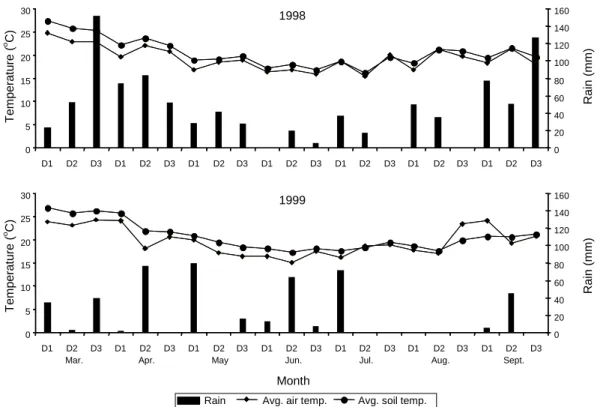Survival of pathogens on soybean debris under no-tillage and conventional tillage systems (1)
Texto
Imagem




Documentos relacionados
A Oficina de Pais e Filhos passa assim a ter uma grande importância, pois através da mesma pode-se oferecer apoio frente aos conflitos existentes e ao sofrimento
Effects of starter N rates on nodulation per plant (nodule number, NN; nodule dry weight, NDW), and on grain yield of the soybean cultivar Celeste grown under no-tillage (NT)
Comparative radial diagrams of the soil quality under the different management systems (NTR: no-tillage crop rotation; PC: perennial crop; CT: conventional tillage and NT:
The tillage systems affected the values of water- conducting macroporosity and saturated hydraulic conductivity, which were higher under conventional tillage than under chisel plow
The treatments consisted of the combination of three soil tillage systems: no-tillage (NT), reduced tillage (RT) and conventional tillage (CT) and of two cover crops: maize
Concentrations of the organic, labile, recalcitrant fractions and total phosphorus in a soil with cover crops under conventional and no-tillage systems over two seasons (dry
Soybean and wheat grain yield as related to soil penetration resistance at a matric potential of -33 kPa in the 0.10-0.20 m layer under the tillage systems: CT- conventional
compared with fallow, is recommended for no-tillage systems in the Cerrado, in the state of Mato Grosso, Brazil, because it promotes significant increases in
